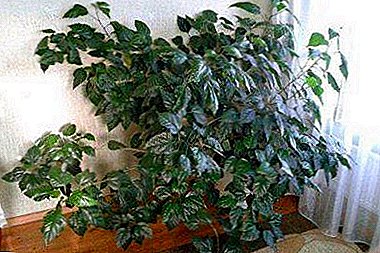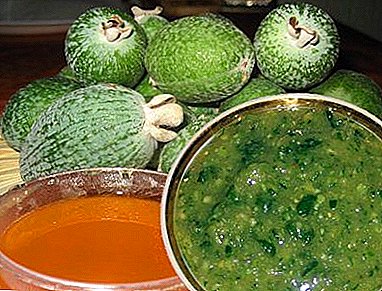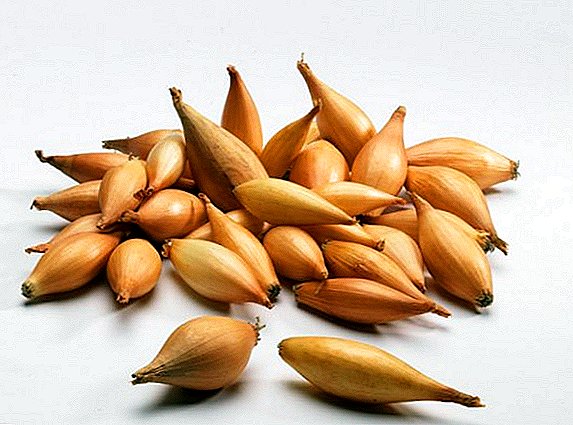 Domestic layers are often affected by various infections, including infectious laryngotracheitis, localized on the mucous trachea, in the nasopharynx, and sometimes causing conjunctivitis. If the infection is not stopped in a timely manner, it can hit all the livestock on the farm. The article will look at how to recognize the symptoms of this infection in time, how to combat it, and what to do to prevent the disease.
Domestic layers are often affected by various infections, including infectious laryngotracheitis, localized on the mucous trachea, in the nasopharynx, and sometimes causing conjunctivitis. If the infection is not stopped in a timely manner, it can hit all the livestock on the farm. The article will look at how to recognize the symptoms of this infection in time, how to combat it, and what to do to prevent the disease.
Occurrence of the disease
Infectious laryngotracheitis in birds is a respiratory infection arising from the defeat of a virus of the family Herpesviridae (herpes) of the mucous membranes of the respiratory tract - larynx, trachea, nasopharynx, nasal cavity and conjunctiva of the eyes.
 Conjunctivitis is one of the symptoms of infectious laryngotracheitis in chickens
Conjunctivitis is one of the symptoms of infectious laryngotracheitis in chickens
We describe some of the characteristics of this virus:
- The disease causes tearing and respiratory distress, can be transmitted from one individual to another by airborne droplets.
- The recovered individual develops a strong immunity to the virus, but it remains its carrier for life and is a source of infection for other birds.
- The same applies to individuals vaccinated with a live vaccine against ILT: if the vaccinated individual is placed in a hen house with unvaccinated livestock, the outbreak of the disease is guaranteed.
- Not only domestic chickens, but also wild and ornamental birds, such as pheasants and peacocks, are susceptible to the virus.
- The young of three or four months of age usually gets sick, and during an outbreak of an epidemic, even younger individuals are sick.
- The ILT virus is spread throughout the world, stable and tenacious under the influence of the external environment.
- The disease is seasonal, so outbreaks of infection usually occur in cold and wet off-season, in a cold and humid climate. A decrease in temperature inhibits the metabolic process of the pathogen, which allows it to persist for a long time.
- People who work with sick birds can also infect pets if a drop of exudate of infected birds remains on their inventory and things.
- Through the eggs of the virus is not transmitted, but remains on the shell. It is not dangerous to eat these eggs, but it is not recommended to use them for incubation.
 In infectious laryngotracheitis in chickens, shortness of breath
In infectious laryngotracheitis in chickens, shortness of breath
Important! If the epidemiological situation in your region is stable, vaccination of poultry is categorically contraindicated: vaccinating chickens with the ILT vaccine, you settle the virus in your household for a long period.
Symptoms of the disease
ILT occurs in birds in several forms: hyperacute, acute, chronic and conjunctival. Let us dwell on the symptoms of each of the forms.
Symptoms of hyperacute form
An outbreak of an ultra-acute form of the disease occurs suddenly. This can happen in the household where the infection has already been recorded.
During the day, almost all livestock are affected and die, with the following symptoms:
- bad breathing;
- birds head;
- cough with blood exudate;
 When the disease is characterized by coughing blood clots
When the disease is characterized by coughing blood clots
- wheezing;
- harkane;
- asthma attacks;
- inactivity of chickens;
- cheesy plaque on the laryngeal mucosa;
- throat swelling;
- lack of appetite;
- no egg laying;
- conjunctivitis.
Symptoms of acute form
The acute phase extends to livestock for 10 days. If you localize the infection in time, the mortality of chickens will be low, about 20%.
Did you know? Among some representatives of the animal world there is a kind of "vaccination" to enhance immunity. For example, if an ant itself brings spores of a fungus-parasite into an anthill, its relatives do not put it in quarantine, and the entire community is vaccinated with a small amount of spores, which stimulates their immunity.The following symptoms are characteristic of this form of the disease:
- low appetite;
- inactivity and lethargy;
- wheezing;
- laryngeal edema;
- cough;
- cheesy discharge.
 Chick cough
Chick cough
Symptoms of the chronic form
Most often, acute laryngotracheitis becomes chronic. The disease is more hidden, and characteristic symptoms may appear immediately before the death of the bird. Mortality in this case - from 2 to 15%.
Characteristic features of chronic form:
- respiratory distress;
- cough;
- the pallor of the coats of earrings and crests;
- fibrous overlays of gray color are observed on the larynx.
Find out what symptoms are characteristic of salmonellosis, Marek's disease, aspergillosis, mycoplasmosis, coccidiosis, infectious bronchitis, egg-dip syndrome, conjunctivitis, salpingitis.
Symptoms of conjunctival form
During the conjunctival phase, ILT affects the nasal mucosa and eyes, which can lead to loss of vision.
 Symptoms of conjunctival form
Symptoms of conjunctival form
The main signs of damage:
- sinusitis;
- bulging or constriction of the third century;
- fear of the light;
- eyelid edema;
- increased tearing;
- hyperemia of the body;
- sticking of eyelids exudate;
- hemorrhages on the mucous membrane of the eyes;
- accumulation of cheesy layers under the third century;
- keratitis;
- vision loss
Learn about leg diseases in chickens, eye diseases in chickens, winter diseases of chickens.
Economic loss of disease
Damage caused by the disease of poultry laryngotracheitis consists of the following indicators:
- The cost of drugs and prevention.
- Spending on the services of a veterinary specialist.
- Reduced egg production by 10-30%.
- Reduced weight gain.
- Losses of livestock as a result of forced slaughter.
- Mortality of young stock 15-80%.
 Infectious laryngotracheitis in chickens
Infectious laryngotracheitis in chickens
Did you know? Once Louis Pasteur conducted experiments on the infection of chickens with chicken cholera and made an oversight: he left, leaving an assistant to continue the experiment. He forgot to make another vaccine for the hens, and later infected all the chickens: they first got sick, and then recovered. Thanks to this mistake, Pasteur concluded: weak bacteria can give immunity from the disease. So he became the pioneer of vaccination.
Treatment of laryngotracheitis
In cases of chick laryngotracheitis, nonspecific treatment is used:
- Adjust feeding with high-quality feed.
- Soldered with solutions of complex vitamins.
- The house is heated sufficiently.
- Well ventilate the room.
- Disinfect the chicken coop.
- Apply drugs.

Drugs for the treatment of laryngotracheitis
At the moment there is no drug that would completely destroy the virus that causes laryngotracheitis. Drugs used in treatment suppress bacterial infections by-side and slightly reduce the activity of the virus.
Find out which antibiotics are used for chickens.
Among them are broad-spectrum antibiotics:
- enrofloxacin;
- tetracyclines;
- norfloxacin;
- ciprofloxacin;
- furazolidone;
- gentamicin;
- biomitsin.
Prevention and preliminary protection measures
Prevention of this disease are the following steps:
- Prevention of virus drift in the chicken coop.
- Vaccination.
 When infectious laryngotracheitis is required complete disinfection of the chicken coop
When infectious laryngotracheitis is required complete disinfection of the chicken coopMeasures to prevent the disease:
- strict adherence to sanitary and hygienic standards;
- regular disinfection of the coop;
- proper feeding.
- a mixture of chlorine and turpentine;
- lactic acid;
- iodotriethylene glycol.
Important! If your chickens have been ill with laryngotracheitis more than two times, the law prohibits their export from the farm.
Preparations for the prevention of laryngotracheitis
Two types of vaccines are used to prevent ILT:
- Chicken Embryo Based. The vaccine provides powerful support for immunity from a particular virus. The use of the drug can cause serious side effects throughout the body.
- Cell Based. The vaccine weakly supports the immune system, but does not have side effects.
 There are vaccines recommended by veterinary specialists in the treatment of laryngotracheitis in broilers and laying hens. They hold in one bottle more than 1000 micro doses. Among them:
There are vaccines recommended by veterinary specialists in the treatment of laryngotracheitis in broilers and laying hens. They hold in one bottle more than 1000 micro doses. Among them:
- Nobilis ilt, producer of Intervet International BV. Netherlands.
- AviPro ILT, producer of Lohman Animal Health GmbH. Germany.
- "AVIVAK ILT", production of NPP "Avivac". Russia.
- Dry vaccine from strain "VNIIBP", producer - Russia.
Learn how to deal with parasites in chickens - worms, ticks, lice, fleas, peroedi.
Disease of domestic chickens with infectious laryngotracheitis is a serious problem for their owners, because they will have to spend a lot of manpower and resources to locate the problem in time. The main route of infection is the ingress of infected or vaccinated birds to a farmstead or farm, therefore, poultry farmers need to be attentive to the complete set of livestock.
Video: viral diseases of birds
Reviews of the disease













